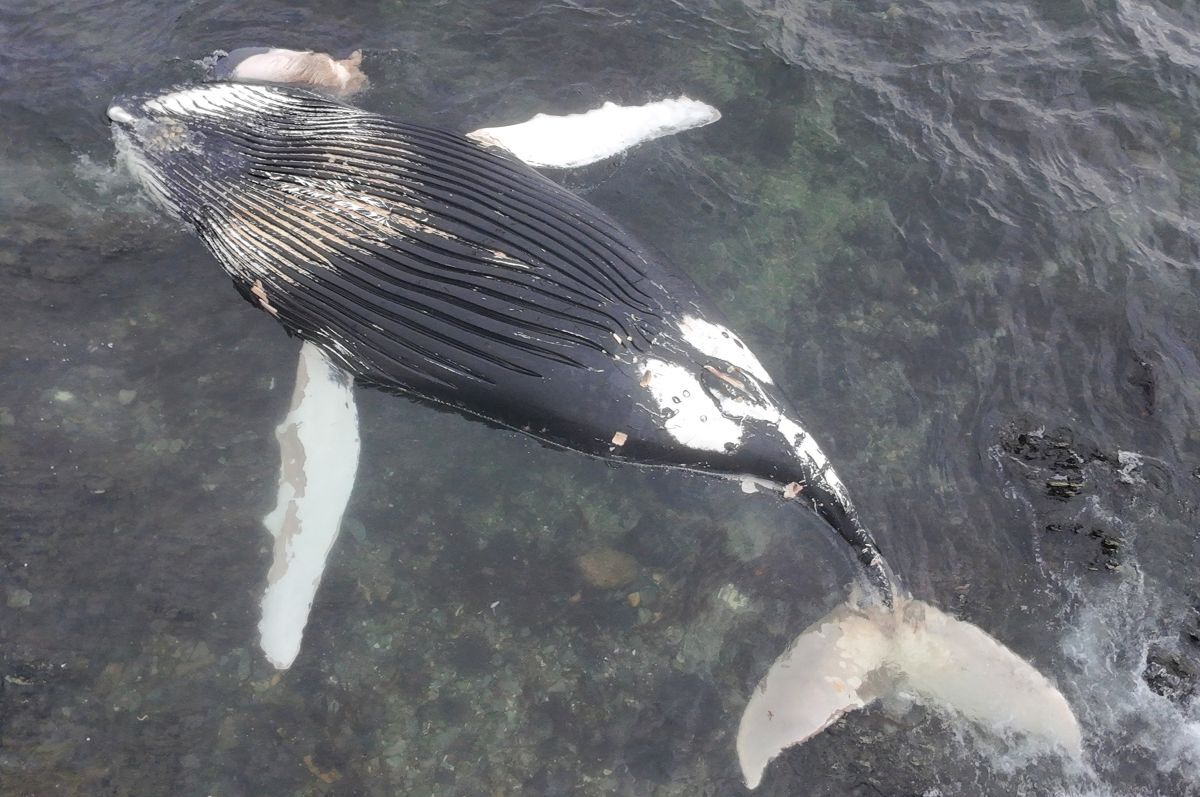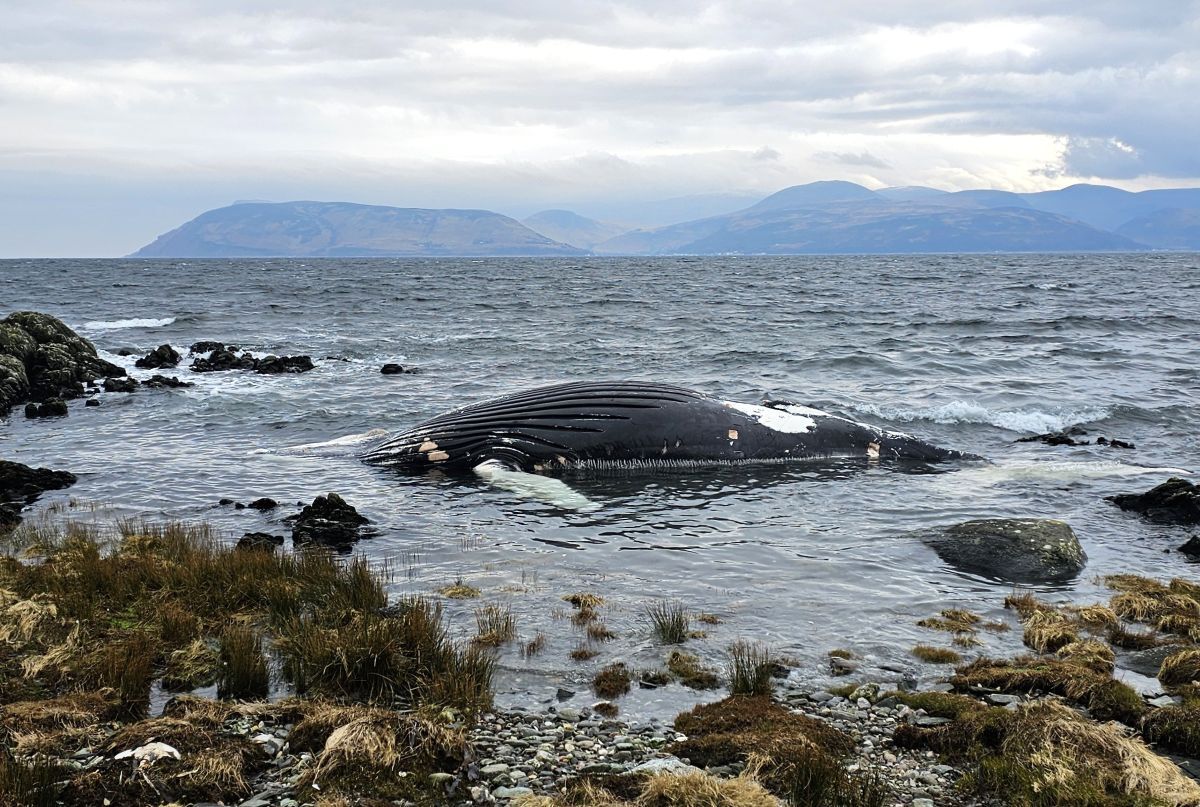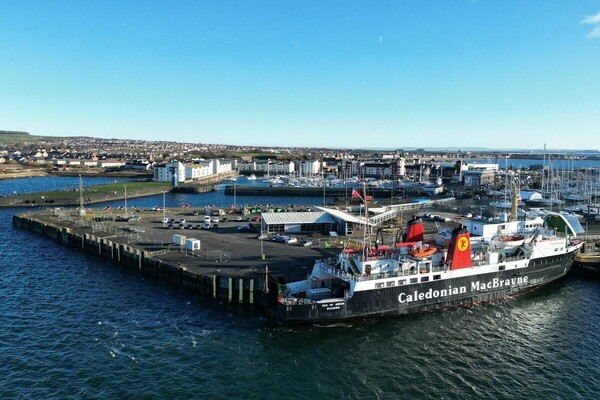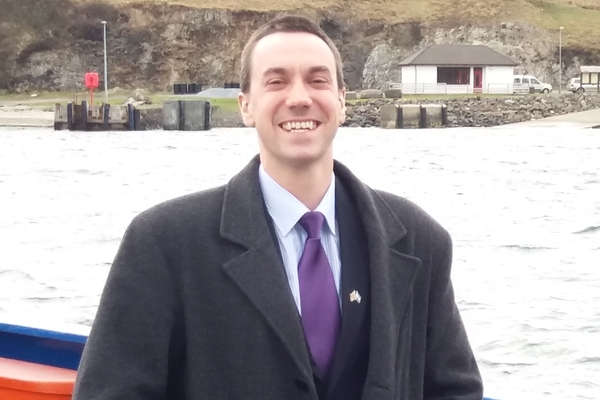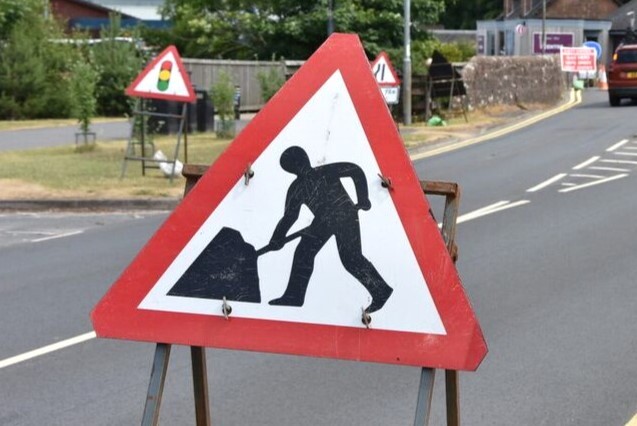Washed up humpback whale believed to have drowned while entangled
Concerns have been raised over the impact of lost and discarded fishing gear after a humpback whale was washed up dead near Skipness.
The young male, measuring 10.5m in length, was discovered deceased on the shore at Claonaig last Friday, with very deep wounds around its tail, as well as other lighter rope marks, all of which indicate that it became entangled in the water.
The animal’s cause of death has not been confirmed but experts believe it likely drowned while entangled, given its otherwise healthy condition, with a good depth of blubber.
Phil Dickinson is a volunteer for the Scottish Marine Animal Stranding Scheme (SMASS), a research and reporting programme based at the University of Glasgow which monitors marine animals stranded on Scottish shores.
He travelled from Craobh Haven to investigate the whale’s body. Assisted by two other volunteers, he took measurements to record the animal’s length and girth, and took small samples from the body which were then sent for analysis.
He described it as a “sad but special” sight, adding: “It’s a special experience to stand next to such a wonderful creature; even though it sadly has died, it still makes me appreciate nature.”
Based at the University of Glasgow’s College of Medical, Veterinary and Life Sciences, Ellie MacLennan is project coordinator for the Scottish Entanglement Alliance, a partnership between six organisations, including SMASS, dedicated to promoting and protecting Scotland’s wildlife, natural heritage and sustainable creel fishing.
She said this is one of a growing number of instances of whale entanglement in Scottish waters in recent months.
“We have had an unusual number of entanglement cases involving humpback whales in the last two months, with four others reported along the west coast since Boxing Day,” she said.
“Two were successfully released alive by fishermen, one was successfully released by British Divers Marine Life Rescue, and one was free-swimming with no active entanglement, but scarring indicative of a recent and potentially serious encounter with some form of rope.
“At least two of these were also young animals, approximately 8-9m in length. These incidents are likely a result of more humpback activity in our inshore waters than previously documented.
“Why this is remains unclear but may be a result of whale populations recovering following the end of commercial whaling, and/or changing distributions of these animals likely linked to changes in prey availability and effects of climate change.
“These, in combination with an increase in the amount of fishing gear being deployed, and number of fish farms operating in inshore waters unfortunately means that entanglements may become more common.”
She said the fishing community has a “vital role” to play in tackling the problem of entanglement, and hopes funding can be acquired for disentanglement training in the industry.
“The Scottish Entanglement Alliance is actively working with the fishing community to better understand the scale and impacts of this threat, not just to the animals affected but also fishermen,” she said.
“We are currently trialling the use of negatively buoyant materials in the creel sector, which, based on findings from previous Scottish Entanglement Alliance work, could potentially reduce entanglement of some whale and shark species by up to 80 per cent.
“Following the successful release of two entangled humpback whales by fishermen, which highlight the absolutely vital role the fishing community can and do play in mitigating this threat, we are also currently seeking funding to run disentanglement training workshops for fishermen, who are ideally placed and equipped to respond to these incidents.”
Latest News
JOBS
Business Development Manager - Highland Broadband
Sign up to our daily Newsletter
Permission Statement
Yes! I would like to be sent emails from West Coast Today
I understand that my personal information will not be shared with any third parties, and will only be used to provide me with useful targeted articles as indicated.
I'm also aware that I can un-subscribe at any point either from each email notification or on My Account screen.
You may also like
Latest News
JOBS
Business Development Manager - Highland Broadband

